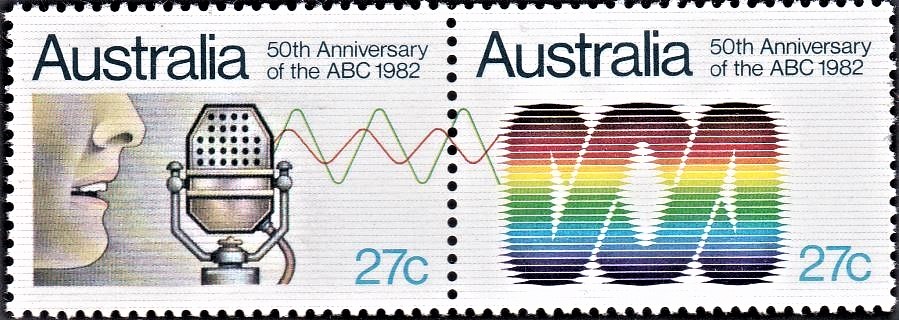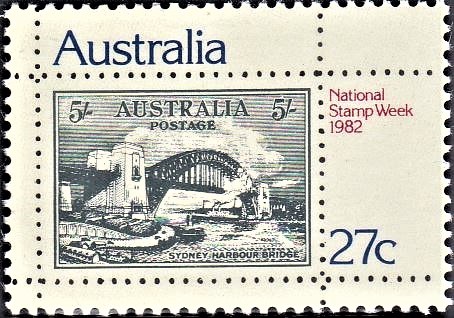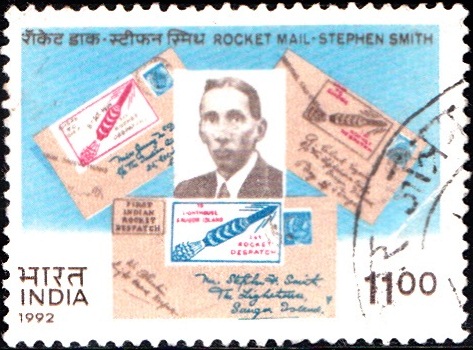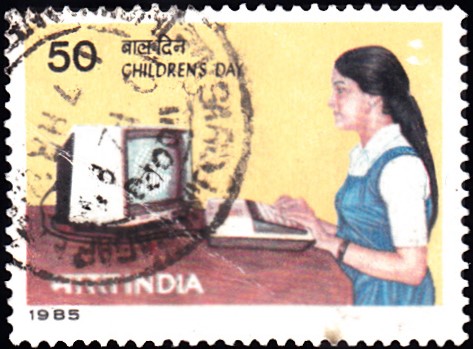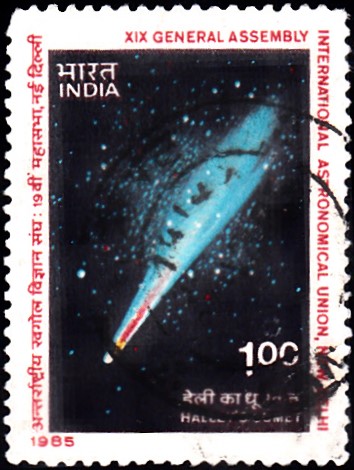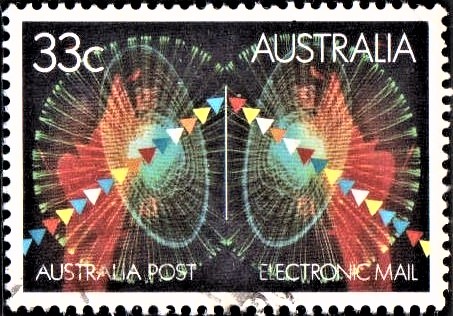
Australia Post Electronic Mail 1985
A commemorative postage stamp on the Australia Post Electronic Mail :
 Issued by Australia
Issued by Australia
Issued on Sep 18, 1985
Designer : Stan Ostoja-Kotkowski, Adelaide [STAN OSTOJA-KOTKOWSKI studied art in Poland and Germany before migrating to Australia in 1949. After furthering his studies at the National Gallery of Victoria, Stan became interested in chromasonics, the use of sound to form shapes and colours. Pioneering the application of lasers to this medium, Stan used lasers for the first time on stage in Australia in 1968. Since then, he has held many exhibitions of artworks based on laser kinetics, the programmed movements of lasers to create an infinite variety of patterns and images. Combining this technique with music, Stan has also produced synchronised sound and light concerts for the Australian National University, the Sydney Conservatorium, and the Adelaide Festival of Arts. His artworks are in the collections of the Australian National Gallery, and all State galleries. The Electronic Mail design is his first for Australia Post.]
Typographer : Russell Bevers, Melbourne
Type : Stamp, Postal Used
Colour : Multi colour
Denomination : 33 Cents
Stamp size : 37.5 mm x 26 mm
Perforation : 14½
Printing process : Photolithography
Printer : Leigh–Mardon Pty Limited, Melbourne
About :
- The twentieth century has seen extraordinary technological development which has affected the postal service as much as every other aspect of modern life. First there was the transition from horse-drawn vehicles to motorised transport, and then the introduction of airmail. The electronic era is now upon us and this stamp issue celebrates the flexible services and super-fast delivery times it makes possible.
- Australia Post‘s electronic mail services combine electronic and traditional mail delivery methods. The telegram, with us for well over a hundred years now, is an example of a similar service. Recent developments in communications technology, however, make it possible to transmit pictures as well as words. It is rather like long-distance photocopying. Each page of a document passes through a facsimile machine and is “read” line by line by an optical scanner and converted into electronic impulses for transmission. The picture is broken up into some 6000 dots for each square centimetre. This electronic information is translated and printed out by the receiving machine so that in no time at all documents can be transmitted to the other side of the world.
- Using such equipment, Australia Post is able to guarantee a two-hour door-to-door delivery to most destinations and 80% of people within Australia. This public facsimile service is called Intelpost and exact copies of original messages, diagrams, graphics, drawings, perhaps hand-written notes in alphabets of other languages, can be transmitted promptly through its network of centres around the country. The material to be transmitted can be delivered to the Intelpost centre and personally collected or delivered by the Australia Post Express Courier service. If speed is not quite so crucial, the transmitted copy can be delivered by the “postie” in the regular manner the next day. Intelpost also offers a “next working day” service for international deliveries. Depending on time zone differences, this can be a “same day” service to some locations. Businesses that have their own facsimile machines can work directly with the Intelpost centre machines.
- To make this service more accessible to members of the general public, Australia Post has expanded its electronic mail facilities. In June 1985, Imagegram was introduced to cater for the transmission of short messages, or drawings, such as personal greetings. Imagegram forms are available at Intelpost counters, and special greeting card formats make this a very appealing service.
- Increasing the flexibility of electronic mail still further is E–Post, also introduced in 1985. This offers a letter preparation service in addition to high speed delivery. Text can be lodged by telephone, telex or over the counter. It will be typed in the appropriate format before transmission and printed on business quality stationery, folded, enveloped and delivered, either within two hours or the next day by regular mail, depending on the sender’s instructions.
- Electronic mail promises more exciting developments in the future. Some of the ideas under consideration by Australia Post include provision for the acceptance of text direct from communicating word processors, or even personal computers. Means of incorporating customer logos, signatures or other graphics with E-Post text messages and the general expansion of the electronic mail network both within Australia and overseas are also being planned.
- The stamp designed to commemorate these innovative services is itself the product of modern technology. Laser kinetics is a technique Stan Ostoja–Kotkowski has been developing since 1967. For this particular design, two lasers were required to produce the different colours. Each laser was programmed to move in a certain pattern and “draw” the desired shape. The resulting optical illusion remained long enough to be photographed. The final design is a montage of laser images produced in this manner.


